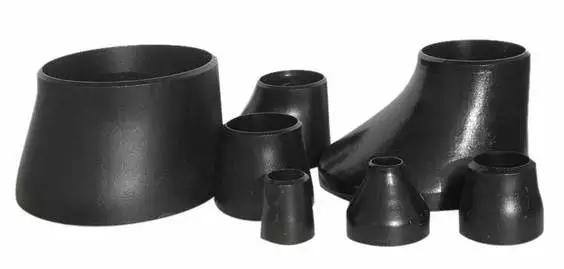Processing Methods of Seamless Pipe Reducers
Posted: 10/22/2014 02:17:10 Hits: 443
On this page
A stainless steel pipe reducer (with a larger and a smaller head) is applied to pipeline where size diameter needs changing. Forming process methods used for reducers commonly contains necking pressing, expanding pressing or a combine of these methods. For some reducers with certain specifications, stamping is also used.
Necking forming for a reducer is to put the pipe billet (with an equal diameter to the large end of the reducer) into a forming die, make the metal molding cavity move by pressing the tube along the axial direction of pipe billet, and finally form the shape. Depending on the diameter of reducers, the processing can be divided into single or repeated press forming.
Expanding forming is to apply a pipe billet with a diameter which is smaller than that of the large end of the reducer. It is formed by inner die expanding along the inner diameter of the pipe billet. Expanding pressing process is mainly to solve the case that larger reducers are hard to form by necking pressing. Sometimes, it is necessary to combine the expanding and necking methods according to the material and product demands.
During the pressing of necking or expanding deformation, determine to use cold or hot pressing depending on the material and reducing situation. Typically, use cold pressing as much as possible. However, hot pressing should be applied to severe hardening due to multiple reducing, too thick wall thickness and alloy material.
Expanding forming is to apply a pipe billet with a diameter which is smaller than that of the large end of the reducer. It is formed by inner die expanding along the inner diameter of the pipe billet. Expanding pressing process is mainly to solve the case that larger reducers are hard to form by necking pressing. Sometimes, it is necessary to combine the expanding and necking methods according to the material and product demands.
During the pressing of necking or expanding deformation, determine to use cold or hot pressing depending on the material and reducing situation. Typically, use cold pressing as much as possible. However, hot pressing should be applied to severe hardening due to multiple reducing, too thick wall thickness and alloy material.
In addition to using steel as raw materials to produce reducers, stamping process can also be adopted for certain specifications with steel plate. Stamping shapes used for stretching should refer to the size design of inner surface of the reducer, and form the steel plate by stretching.
Stress distribution and deformation characteristics:
1. Bending moment generated by the pressure difference of a concentric reducer under internal pressure may cause the large end relatively open and the small end relatively contracts.
2. Circumferential stress under internal pressure at the large end side and middle side of an eccentric reducer is the strongest.
Stress distribution and deformation characteristics:
1. Bending moment generated by the pressure difference of a concentric reducer under internal pressure may cause the large end relatively open and the small end relatively contracts.
2. Circumferential stress under internal pressure at the large end side and middle side of an eccentric reducer is the strongest.

Post URL: https://www.landeepipefitting.com/processing-methods-of-seamless-pipe-reducers.html
Landee is a professional industrial pipe fitting manufacturer and be well accepted by customers all over the world, we has been producing Pipe Fitting for a variety of applications since 1985. welcome to access our website: https://www.landeepipefitting.com.

